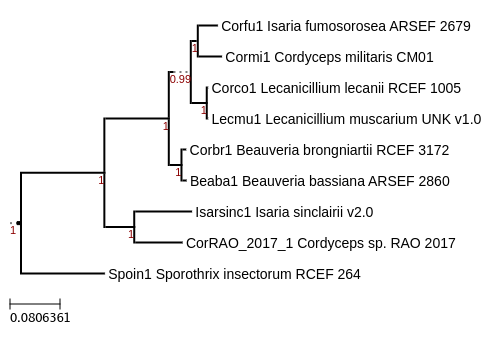
The Lecanicillium muscarium UNK genome was sequenced as part of “1KFG: Deep Sequencing of Ecologically-relevant Dikarya” project (CSP1974), which explores genomic diversity within keystone lineages of plant-interacting fungi and saprophytic fungi that are of special ecological importance for understanding terrestrial ecosystems. Unravelling the genomic signatures reflecting the adaptation of these microbes to the host cell environment represent a promising way to better understand how the endophytic lifestyle evolved in phylogenetically unrelated fungal species. Comparative genome analysis between different plant hosts, and between saprotrophic, mycorrhizal, and pathogenic fungi will provide new insights into the specific adaptations but also the conserved signatures associated with these different lifestyles.
Lecanicillium muscarium is the recognized name of an entomopathogenic fungus, previously known as Verticillium lecanii (Zimmerman) Viegas. It is now identified as an anamorphic form within the Cordyceps group of genera in the Cordycipitaceae. Isolates once classified as V. lecanii may actually be L. attenuatum, L. lecanii, L. longisporum, L. muscarium, or L. nodulosum. Described in 1861, this fungus is found worldwide. It infects insects through sticky spores that grow and invade the body, consuming internal organs and causing death.
Researchers who wish to publish analyses using data from unpublished CSP genomes are respectfully required to contact the PI (Dr. Francis Martin) and JGI to avoid potential conflicts on data use and coordinate other publications with the CSP master paper(s).
